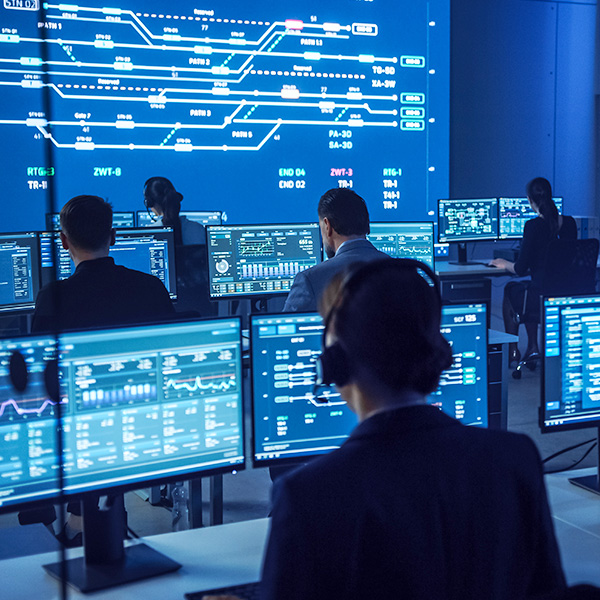

SPONSORED
Critical 24/7 Operations Hubs That Power a Connected World
Take a look behind the scenes of command and control centers, where design and facilities make all the difference to round-the-clock performance.
By Legrand | October 24, 2023
Read Time: 4 Minutes
From 24/7 industrial and manufacturing process control, to the always-on digital networks and security that every global organization relies on, control rooms and command centers are there in the background, keeping things running smoothly. Specialist teams are constantly monitoring systems, power supplies, operations, and sites, responding to alerts and ensuring that technologies and facilities are working optimally.
These command and control rooms never shut down, with successive shifts and teams picking up from each other to maintain continuous operations. In our connected world, we take all this for granted. That said, we also know that designing and equipping high-performance control rooms that never take a break is an exacting business.
Ergonomics Directly Impacts Performance
Ergonomic design is the first requirement for any 24/7 control room. Ergonomics are essential when operators are maintaining their positions for long shifts, including sit to stand capabilities like stand-up desks that have become essential over the past few years. Effective control room design plans for the optimum room layout and console configuration in each application.
Operator comfort isn't just nice to have. 24/7 control rooms handle critical operations and monitoring, so the environment needs to be designed to keep operators focused and alert, without distractions or concerns that could reduce their performance. A control room operator could be monitoring critical systems like power grids, telecoms networks, transport systems or chemical processes. Their fast and appropriate response to alerts or notifications can relate directly to safety, security, business continuity, efficiency, and even transit disruption.
Other control room design considerations that any provider under consideration should include are function, equipment, room size, useable space, control equipment, standards and specifications, finishes and weight.

Customizable Control Room Consoles
It is important to note that any control room console should offer customizable features, including fixed or adjustable height, easy-to-access cable management, power, data and ventilation options, task lighting, modular equipment options, and future-proof technology storage. It’s critical to configure these for each individual use case, so operators remain comfortable, focused, and effective while they work.
Data Visualization Priorities and More for 24/7 Control Rooms
It’s important to understand exactly how a control room best provides easy, clear visual data access and optimized control room traffic flow. Optimized room layouts and ergonomics provide obstacle free user traffic flows which are critical during high alert activities. Sightline testing to ensure operators can clearly and easily see screens, whether wall mounted or directly in front of them, is also key. Control rooms often feature video walls and large displays as well as single or multiple monitors at each console for visualizing critical data. Again, it's key that any control room design is planned to make sure these are easily and comfortably visible with unobstructed sight lines.
Building in Control Room Flexibility for an Ever-Evolving Connected World
The need for flexibility cannot be overstated when investing in cutting-edge command and control center environments. Over time operational needs may change and you may want to add or remove workstations or adjust for new technologies. Modular design and selecting consoles from an established, high-quality supplier means you'll be able to easily expand or reconfigure to meet changing needs.
Conclusion
In 24/7 command and control environments we all understand that organizations need high quality consoles, technical equipment, furniture, and cabling management infrastructure built to withstand continuous use and provide for easy maintenance. But that doesn't have to mean unattractive and utilitarian. A contemporary and visually appealing command and control workspace provides multiple benefits including enhanced morale, wellbeing and enhanced productivity - benefits that help encourage employees to maintain the highest standards. Any control room design provider under your consideration should be keeping these ideas in mind.
To learn more about control room design, reach out to your local Wesco Pro A/V Account representative.
ABOUT THE SPONSOR
This article was brought to you in partnership with Legrand.
Legrand creates amazing AV experiences through innovative solutions and exceptional service. Their premium, best-in-class designs lead the industry across multiple product categories, including audio and video, cooper and fiber cabling and data center infrastructure.



